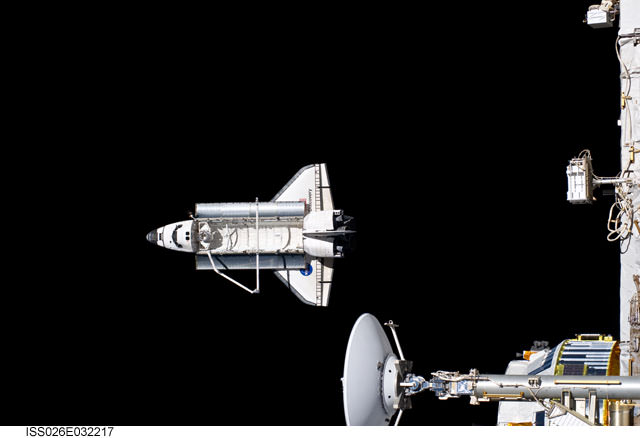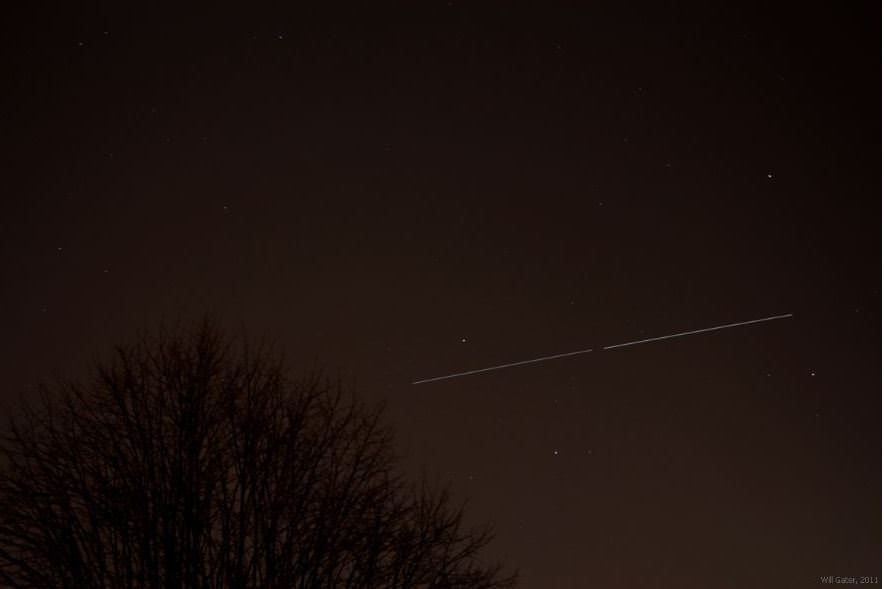The now-retired space shuttle orbiters will soon be heading to their new museum homes. April 17, 2012 is the current date planned for a modified Boeing 747 to give a piggyback ride to shuttle Discovery to bring it from Kennedy Space Center to Washington Dulles International Airport, where it will then be towed to the National Air and Space Museum’s Steven F. Udvar-Hazy Center, located adjacent to the airport. Just how will this be done? The video above explains the procedure, and of course, this is not the first time a space shuttle has ridden atop the specially designed airplane. Every time a shuttle landed in Edwards Air Force Base in California (54 times) or New Mexico (once), it had to be transported back to Kennedy Space Center via an airplane.
Continue reading “Flying the Space Shuttles to their New Homes”
NASA Terminates Power, Locks Cargo Doors on Retiring Shuttle Discovery
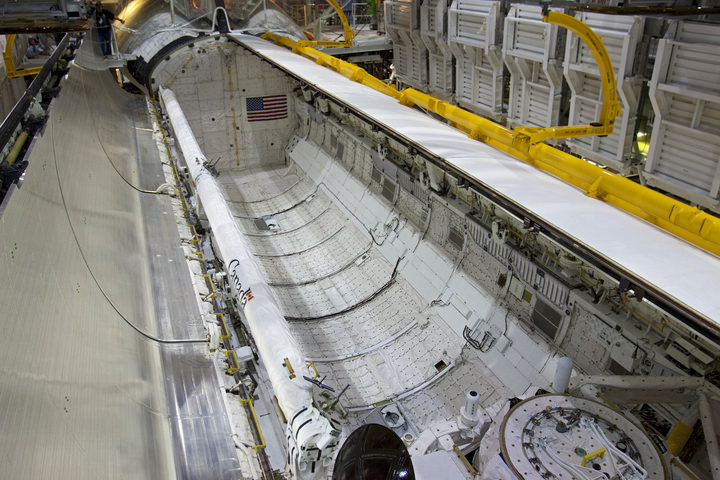
[/caption]
Space Shuttle Discovery was powered down forever and the payload bay doors were locked tight for the final time on Friday, Dec. 16, by technicians at NASA’s Kennedy Space Center (KSC) in Florida.
Take a good last glimpse inside the retiring Discovery’s payload bay as the clamshell like doors seal off all indigenous US human spaceflight capability for several years at a minimum.
The historic “Power Down” came after both of the 60 foot long cargo bay doors were swung shut this morning for the last time inside the shuttle hanger known as Orbiter Processing Facility-1 (OPF-1) – in the shadow of the cavernous Vehicle Assembly Building (VAB).
Workers at KSC are in the final stages of the transition and retirement activities that will soon lead to Discovery departing her Florida launch pad forever on her final voyage. They are converting the orbiter from active duty flight status to display as a nonfunctional and stationary museum piece.
Kennedy Space Center Director Robert Cabana, a former space shuttle commander, formally marked the final power down and sealing of Discovery’s payload bay doors at a ceremony in OPF-1 with the skeleton force of remaining shuttle personnel engaged in the decommissioning efforts.
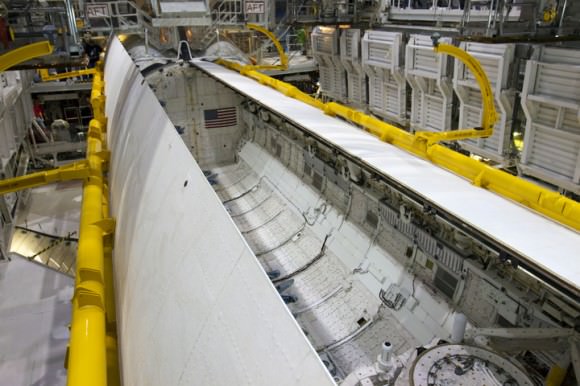
Discovery was the Fleet leader and NASA’s oldest orbiter having flown the most missions. All told Discovery soared 39 times to space from her maiden flight in 1984 to her last touchdown on the STS-133 mission in March 2011.
In between, Discovery deployed the iconic Hubble Space Telescope, launched the Ulysses solar probe and numerous other science satellites and Department of Defense surveillance platforms, conducted the first shuttle rendezvous with Russia’s Mir Space Station and delivered key components to the International Space Station including the last habitable module.
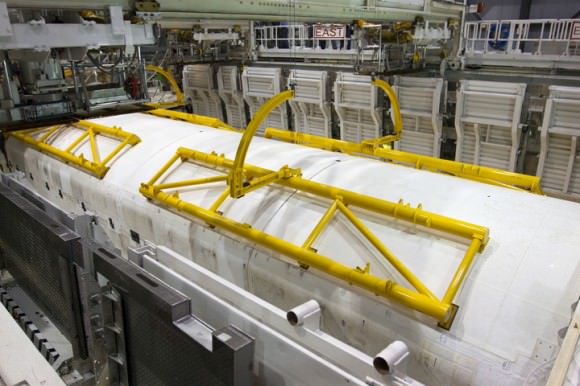
Discovery flew both ‘return to flight’ missions following the Challenger and Columbia tragedies as well as the second flight of Astronaut and Senator John Glenn, first American to orbit the Earth.
Discovery has been thoroughly cleansed and cleared of all hazardous materials in preparation for making the vehicle safe for public display at her new and final resting place, the Smithsonian’s National Air and Space Museum Steven F. Udvar-Hazy Center in Chantilly, Va..
Technicians re-installed the three power generating fuel cells after draining and purging all the toxic materials and fuels from the fuel lines and assemblies. Three replica space shuttle main engines were also installed last week.
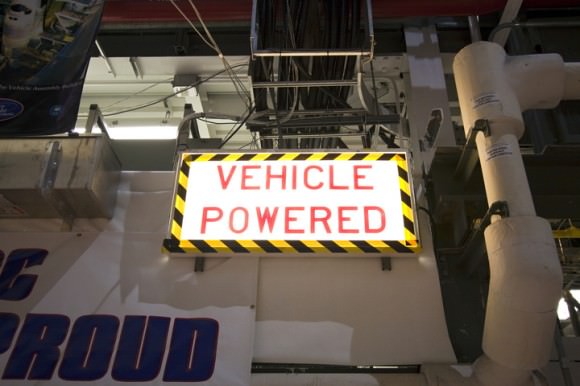
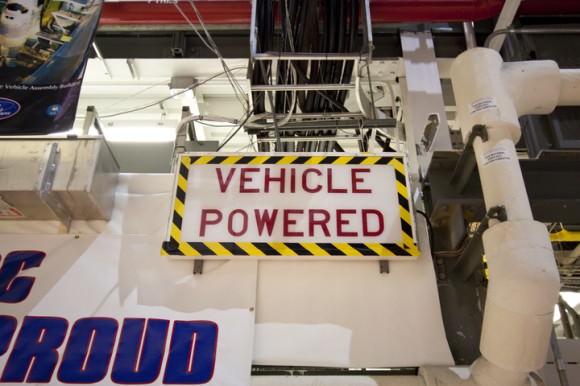
In 2012, the 100 ton orbiter will be hoisted piggyback atop NASA’s specially modified 747 carrier aircraft. Discovery will take flight for the last time in April and become the center piece at her new home inside the Smithsonian’s spaceflight exhibition in Virginia.
To make way for Discovery, the prototype shuttle Enterprise currently housed at the Smithsonian will be hauled out and flown to New York City for display at the Intrepid, Sea, Air and Space Museum.
Altogether, Discovery spent 365 days in space during the 39 missions, orbited Earth 5,830 times and traveled 148,221,675 miles during a career spanning 27 years.
There is nothing on the horizon comparable to NASA’s Space Shuttles. Their capabilities will be unmatched for several decades to come.
America is now totally dependent on the Russians for launching US astronauts to space until privately built ‘space taxis’ from firms like SpaceX, Boeing and Sierra Nevada are ready in perhaps 4 to 6 years.
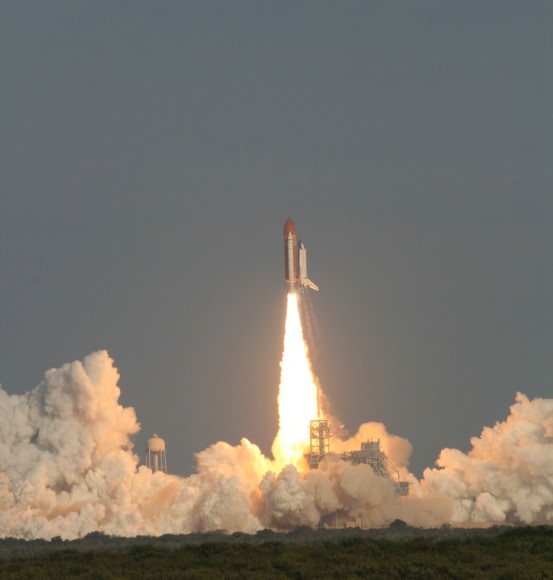
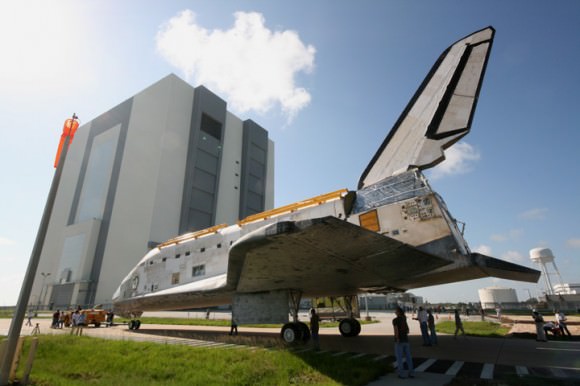
Shuttle Duo Nose-to-Nose Rendezvous highlights Retirement Duty
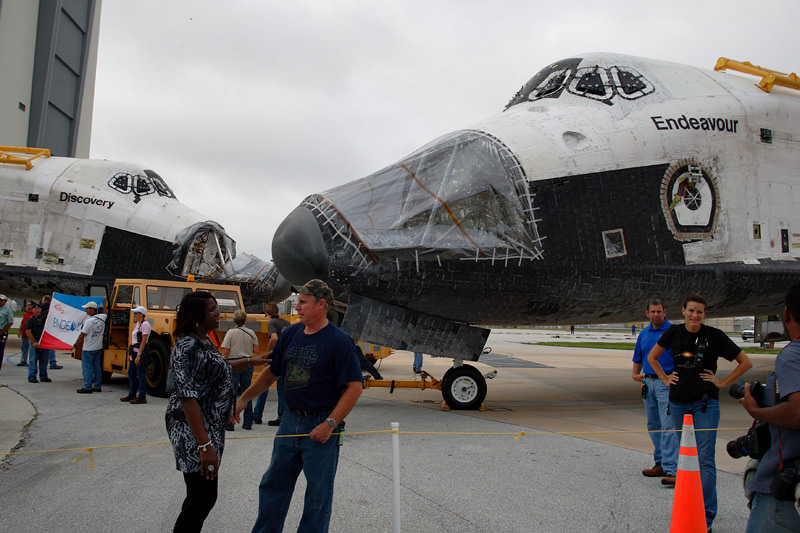
[/caption]
To see one shorn shuttle is bad enough. Seeing two NASA space shuttles edged together and voluntarily gutted of their spaceflight capability for lack of Federal Government funding in the prime of their lives is beyond sad.
Two of NASA’s trio of space shuttle orbiters – Discovery & Endeavour – switched locations at the Kennedy Space Center (KSC) on August 11, moving them further down the path to eternal retirement and public exhibit at their future homes in museums. That’s far afield from their intended purpose to soar as spaceships of exploration to the High Frontier.
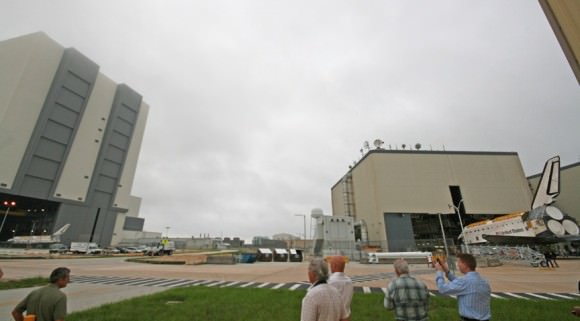
Discovery and Endeavour briefly met in a matchless nose-to-nose configuration for a roadside photo opportunity between the humongous Vehicle Assembly Building (VAB) and the processing hanger – dubbed the Orbiter Processing Facility – where the orbiters are prepared for flight.
Space Shuttle’s Discovery and Endeavour swapped places at KSC so that technicians could resume preparations towards the transition and retirement of shuttle Discovery – the first of NASA’s orbiters to be officially withdrawn from active duty spaceflight service.
First, Discovery was backed out of temporary storage from a high bay inside the VAB. Then Endeavour was towed out of Orbiter Processing Facility-1. Technicians then maneuvered the orbiters to a rendezvous point in between on the ground. Just imagine how grand this vista would have appeared in space.
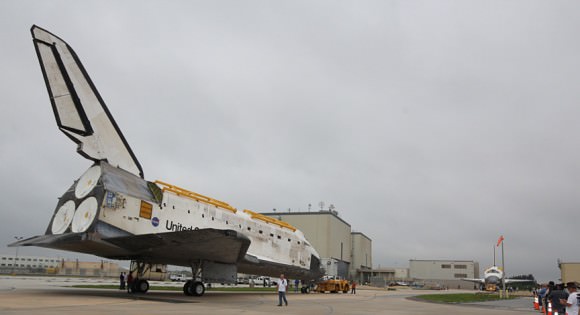
At last Discovery and Endeavour met for the truly sad nosy encounter of gaping holes where the forward reaction control thrusters once fired to meticulously maneuver the shuttles in orbit. Protective plastic sheeting meant to shield the empty thruster bay from FOD – or Foreign Object Debris – was in tatters and whipping wildly in the wind almost from the moment Discovery emerged from the VAB.
The rear ends of both orbiters looked like the main engines had been sawed off. Both orbiters have been stripped of their trio of mighty space shuttle main engines (SSME’s) and duo of bulbous Orbital Maneuvering System (OMS’s) pods for months of decommissioning work.
Discovery was then pulled into the Orbiter Processing Facility-1 (OPF-1) where the next step is to extract even more of her guts, namely the Auxiliary Power Units (APU’s) and associated systems for “safing” over the coming months. In April 2012, Discovery is scheduled to depart KSC forever and be flown off for permanent public display at the Smithsonian’s National Air and Space Museum Steven F. Udvar-Hazy Center in Virginia.
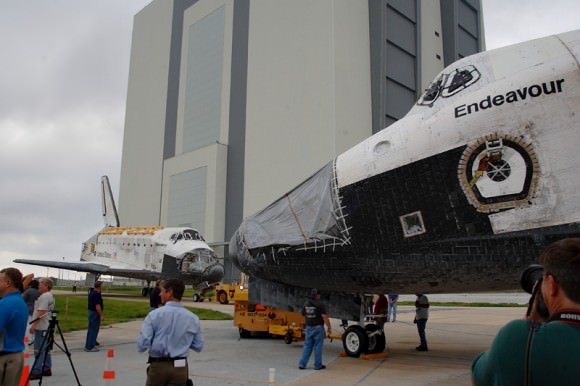
Endeavour was towed into the VAB for storage until October, when she will be moved into OPF-2 for further work to ready her for public display at the California Science Center in Los Angles sometime next summer.
Atlantis is next on the chopping block. And America retains zero indigenous capability for human spaceflight.
The situation likely won’t change for at least several years until one of the commercial providers launches a human rated “space taxi” to low earth orbit.
Read my continuing features here about Discovery, Endeavour and Atlantis
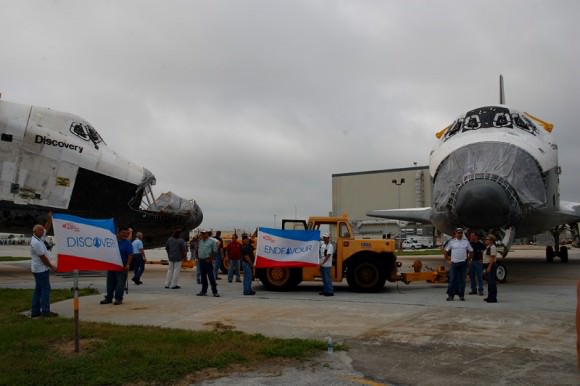
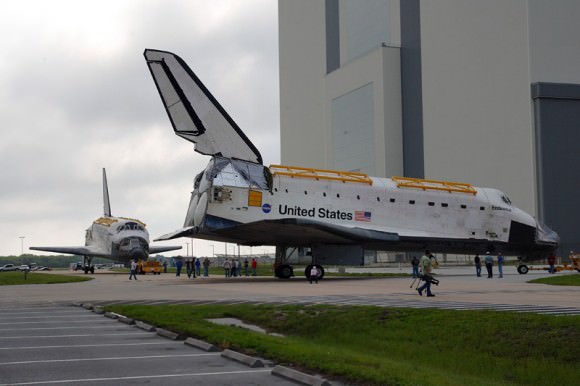
Stripped Down Discovery rolls towards Retirement at Kennedy Space Center
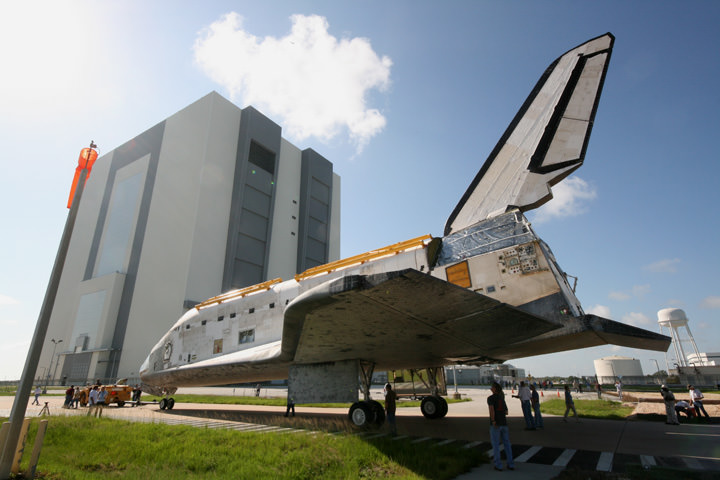
[/caption]
Space Shuttle Discovery was briefly on public display on Wednesday July 13 as she emerged from the hanger at the Kennedy Space Center where she has been undergoing processing for retirement since her final landing on the STS-133 mission.
It was a rather stark and sad moment because Discovery looked almost naked and downtrodden – and there was no doubt that she would never again fly majestically to space because huge parts of the orbiter were totally absent.
Discovery was stripped bare of her three main engines and orbital maneuvering pods at the rear and she had a giant hole in the front, just behind the nose, that was covered in see through plastic sheeting that formerly housed her now missing forward thrusters. Without these essential components, Discovery cannot move 1 nanometer.
When the Space Shuttle is forcibly retired in about a week, America will have no capability to launch astronauts into space and to the International Space Station for many many years to come.
Discovery was pulled a quarter mile from the Orbiter Processing Facility (OPF) to the Vehicle Assembly Building (VAB) to make room for Space Shuttle Atlantis when she returns next week from the STS-135 mission, according to Stephanie Stilson, the flow manager for Discovery, in an interview with Universe Today.
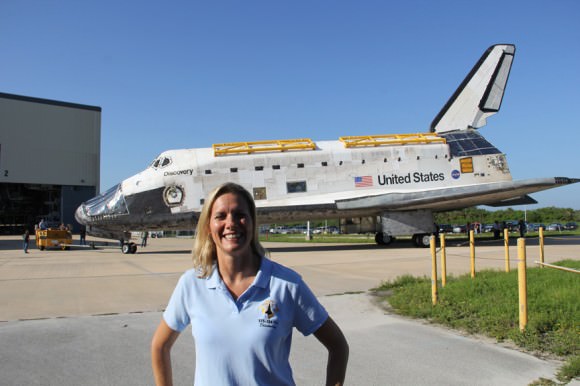
STS-135 is the 135th and final mission of NASA’s 30 year long Space Shuttle Program.
NASA now only has control of two of the three shuttle OPF’s since one OPF has been handed over to an unnamed client, Stilson said.
Stilson is leading the NASA team responsible for safing all three Space Shuttle Orbiters. “We are removing the hypergolic fuel and other toxic residues to prepare the orbiters for display in the museums where they will be permanently housed.”
“The safing work on Discovery should be complete by February 2012,” Stilson told me. “NASA plans to transport Discovery to her permanent home at the Smithsonian Air and Space Museum on April 12, 2012, which coincides with the anniversary of the first shuttle launch on April 12, 1981.”
Discovery Photo Album by Ken Kremer
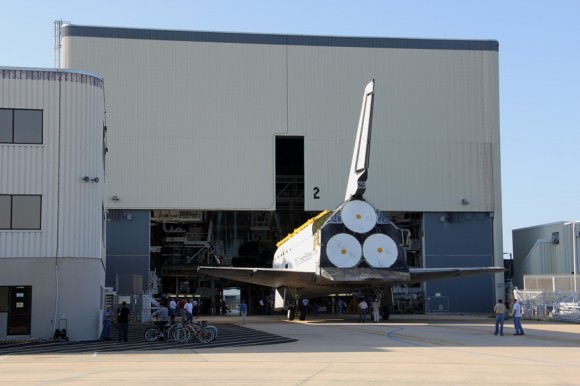
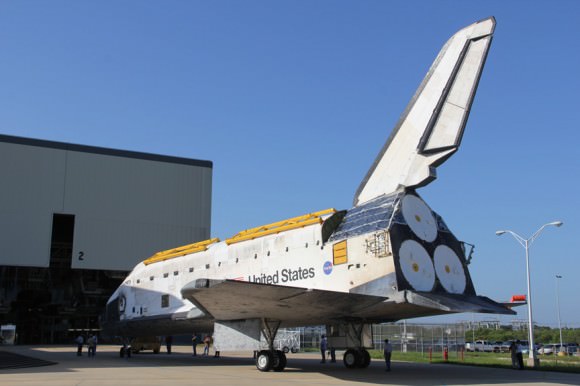
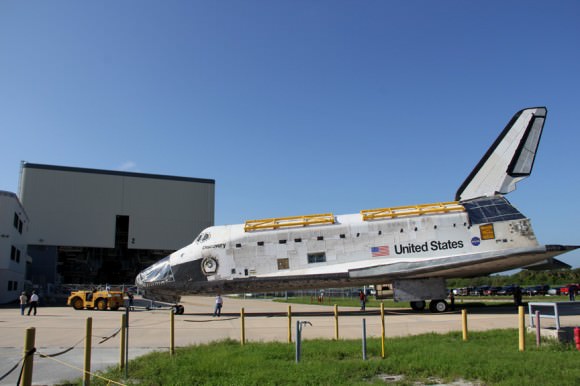
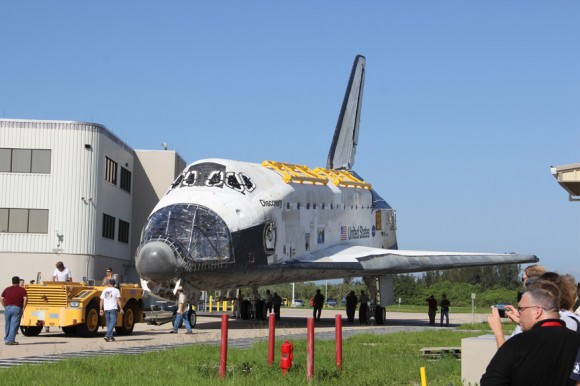

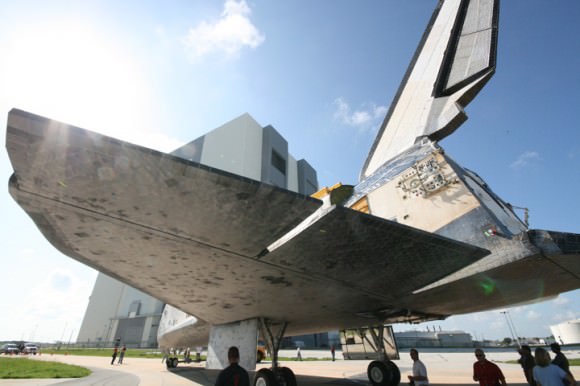
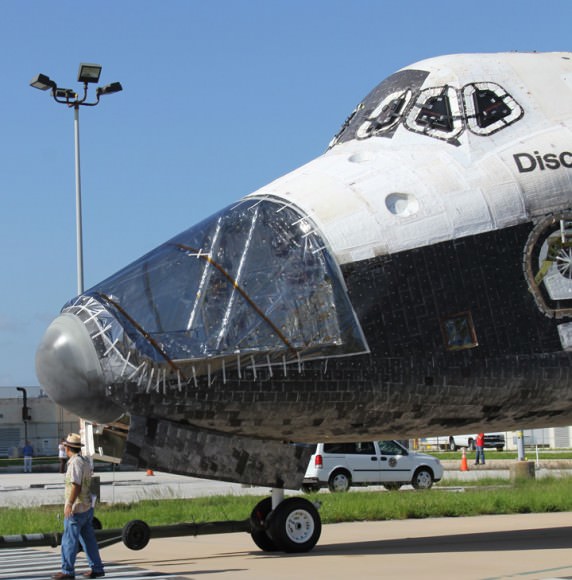
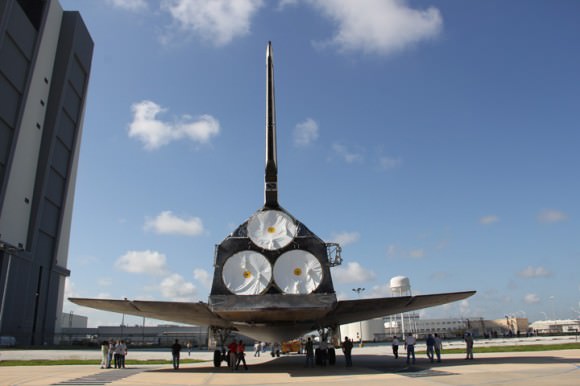
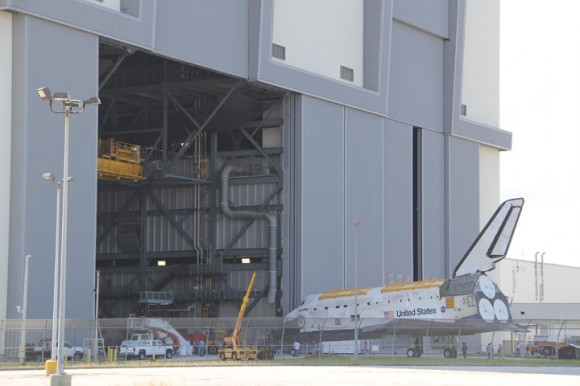
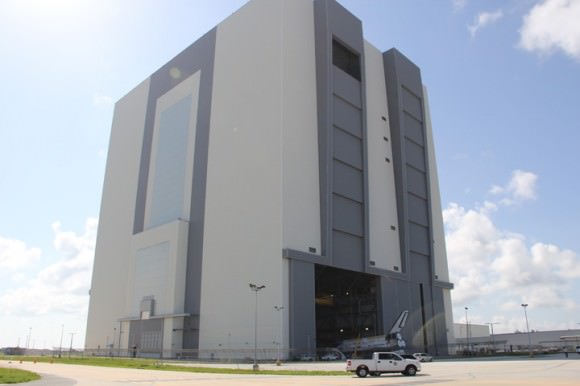
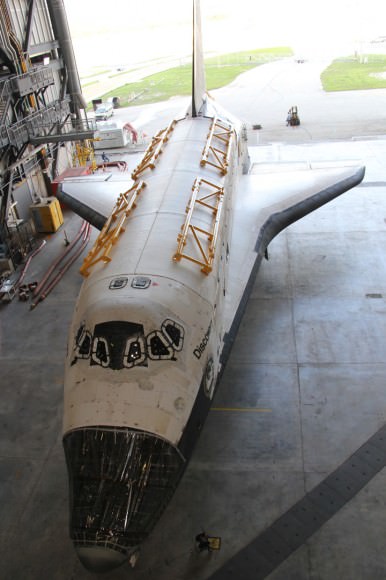
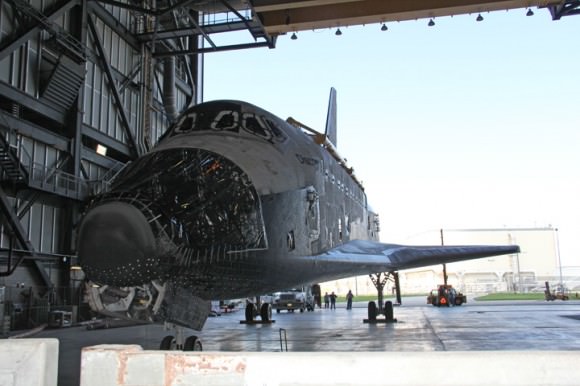
Robo Trek Debuts … Robonaut 2 Unleashed and joins First Human-Robot Space Crew
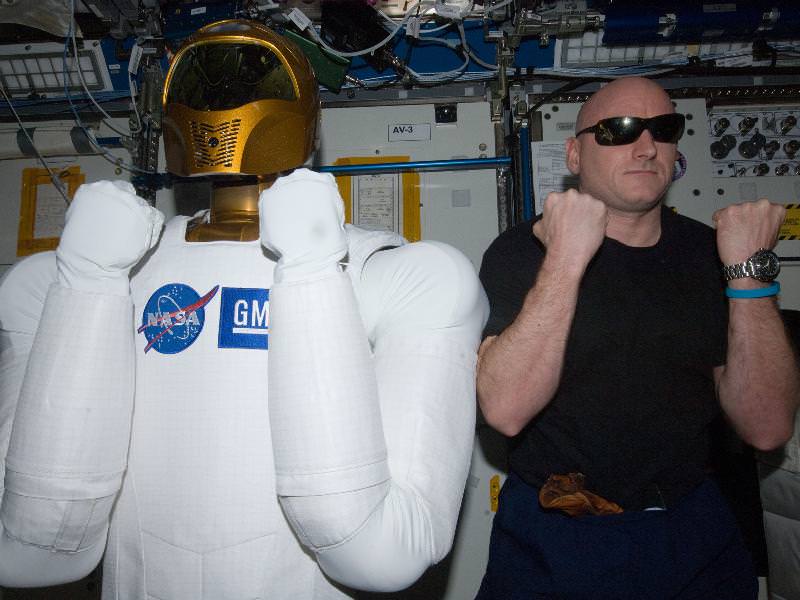
Star Trek’s Data must be smiling.
One of his kind has finally made it to the High Frontier. The voyages of Robo Trek have begun !
Robonaut 2, or R2, was finally unleashed from his foam lined packing crate by ISS crewmembers Cady Coleman and Paolo Nespoli on March 15 and attached to a pedestal located inside its new home in the Destiny research module. R2 joins the crew of six human residents as an official member of the ISS crew. See the video above and photos below.
[/caption]
The fancy shipping crate goes by the acronym SLEEPR, which stands for Structural Launch Enclosure to Effectively Protect Robonaut. R2 had been packed inside since last summer.
Robonaut 2 is the first dexterous humanoid robot in space and was delivered to the International Space Station by Space Shuttle Discovery on STS-133.
”Robonaut is now onboard as the newest member of our crew. We are happy to have him onboard. It’s a real good opportunity to help understand the interface of humans and robotics here in space.” said Coleman. “We want to see what Robonaut can do. Congratulations to the team of engineers [at NASA Johnson Space center] who got him ready to fly.”
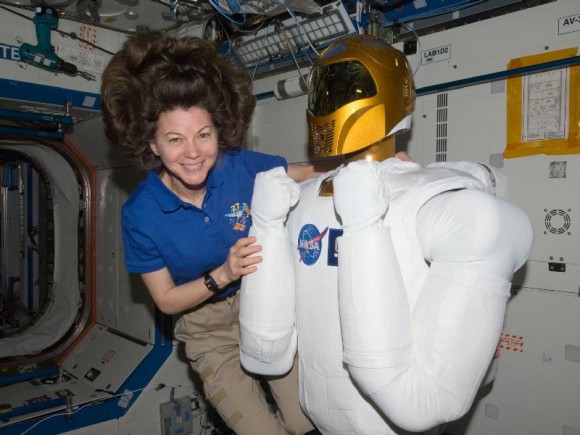
Discovery blasted off for her historic final mission on Feb. 24 and made history to the end by carrying the first joint Human-Robot crew to space.
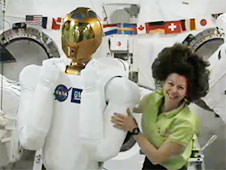 The all veteran human crew of Discovery was led by Shuttle Commander Steve Lindsey. R2 and SLEEPR were loaded aboard the “Leonardo” storage and logistics module tucked inside the cargo bay of Discovery. Leonardo was berthed at the ISS on March 1 as a new and permanent addition to the pressurized habitable volume of the massive orbiting outpost.
The all veteran human crew of Discovery was led by Shuttle Commander Steve Lindsey. R2 and SLEEPR were loaded aboard the “Leonardo” storage and logistics module tucked inside the cargo bay of Discovery. Leonardo was berthed at the ISS on March 1 as a new and permanent addition to the pressurized habitable volume of the massive orbiting outpost.
“It feels great to be out of my SLEEPR, even if I can’t stretch out just yet. I can’t wait until I get to start doing some work!” tweeted R2.
The 300-pound R2 was jointly developed in a partnership between NASA and GM at a cost of about $2.5 million. It consists of a head and a torso with two arms and two hands. It was designed with exceptionally dexterous hands and can use the same tools as humans.
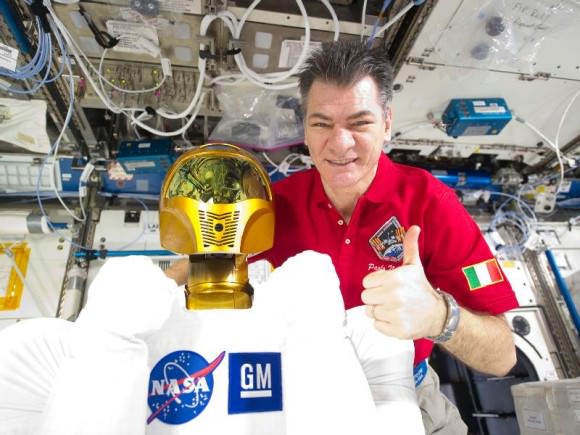
R2 will function as an astronaut’s assistant that can work shoulder to shoulder alongside humans and conduct real work, ranging from science experiments to maintenance chores. After further upgrades to accomplish tasks of growing complexity, R2 may one day venture outside the ISS to help spacewalking astronauts.
“It’s a dream come true to fly the robot to the ISS,” said Ron Diftler in an interview at the Kennedy Space Center. Diftler is the R2 project manager at NASA’s Johnson Space Center.
President Obama called the joint Discovery-ISS crew during the STS-133 mission and said he was eager to see R2 inside the ISS and urged the crew to unpack R2 as soon as possible.
“I understand you guys have a new crew member, this R2 robot,” Obama said. “I don’t know whether you guys are putting R2 to work, but he’s getting a lot of attention. That helps inspire some young people when it comes to science and technology.”
Commander Lindsey replied that R2 was still packed in the shipping crate – SLEEPR – and then joked that, “every once in a while we hear some scratching sounds from inside, maybe, you know, ‘let me out, let me out,’ we’re not sure.”
Robonaut 2 is free at last to meet his destiny in space and Voyage to the Stars.
“I don’t have a window in front of me, but maybe the crew will let me look out of the Cupola sometime,” R2 tweeted from the ISS.
Read my earlier Robonaut/STS-133 stories here, here, here and here.
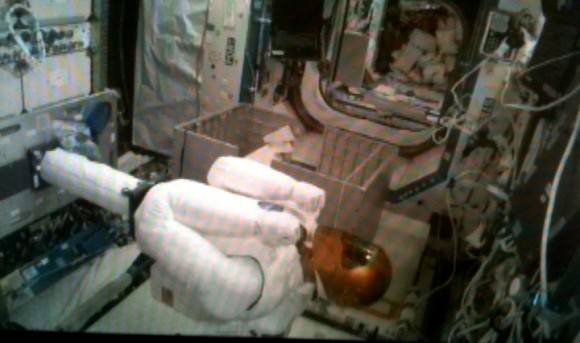
I’m in space, says Robonaut 2 from inside the Destiny module at the ISS. Credit: NASA
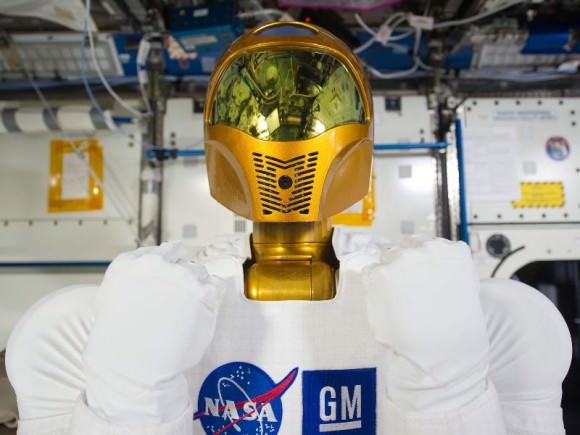
Robonaut 2, the dexterous humanoid astronaut helper, is pictured in the Destiny laboratory of the International Space Station.
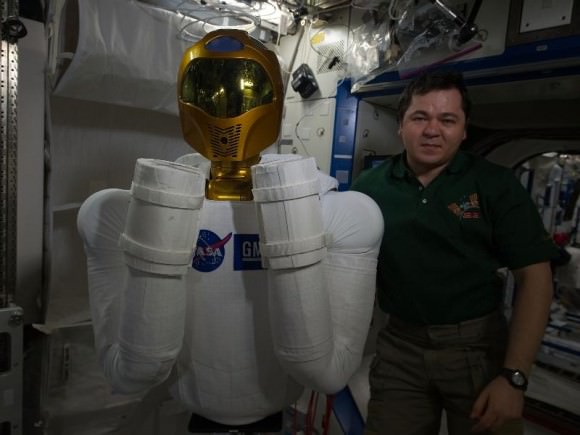
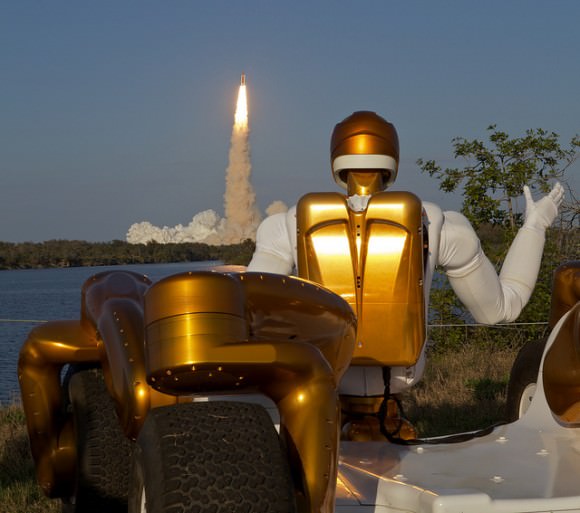
Robonaut R2A waving goodbye as Robonaut R2B launches into space aboard STS-133 from the Kernnedy Space Center. R2 is the first humanoid robot in space. Credit: Joe Bibby
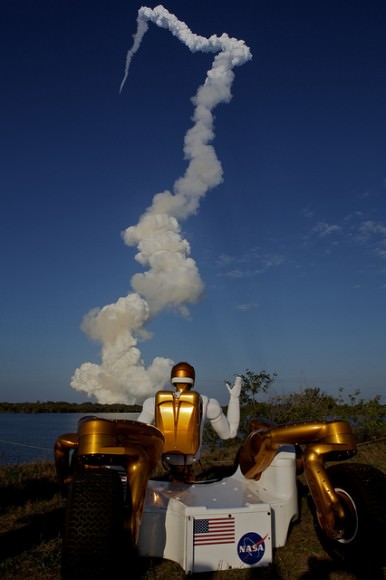
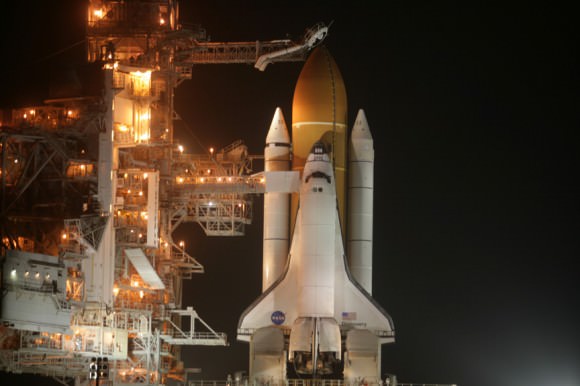
First joint Human – Robot crew. Credit: Ken Kremer
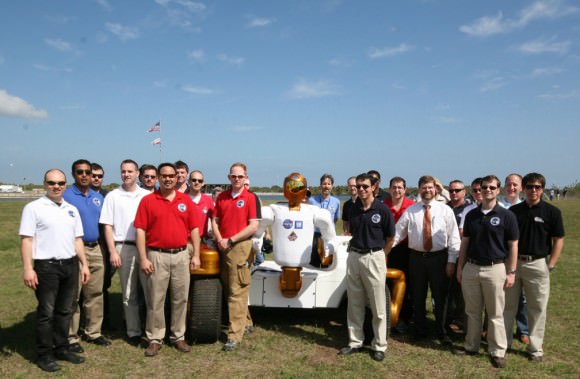
Robonaut 2 and the NASA/GM team of scientists and engineers watched the launch of Space Shuttle Discovery and the first joint Human-Robot crew on the STS-133 mission on Feb. 24, 2011 from the Kennedy Space Center. Credit: Ken Kremer
Discoverys Last Launch and Landing Captured in Exquisite Amateur Videos
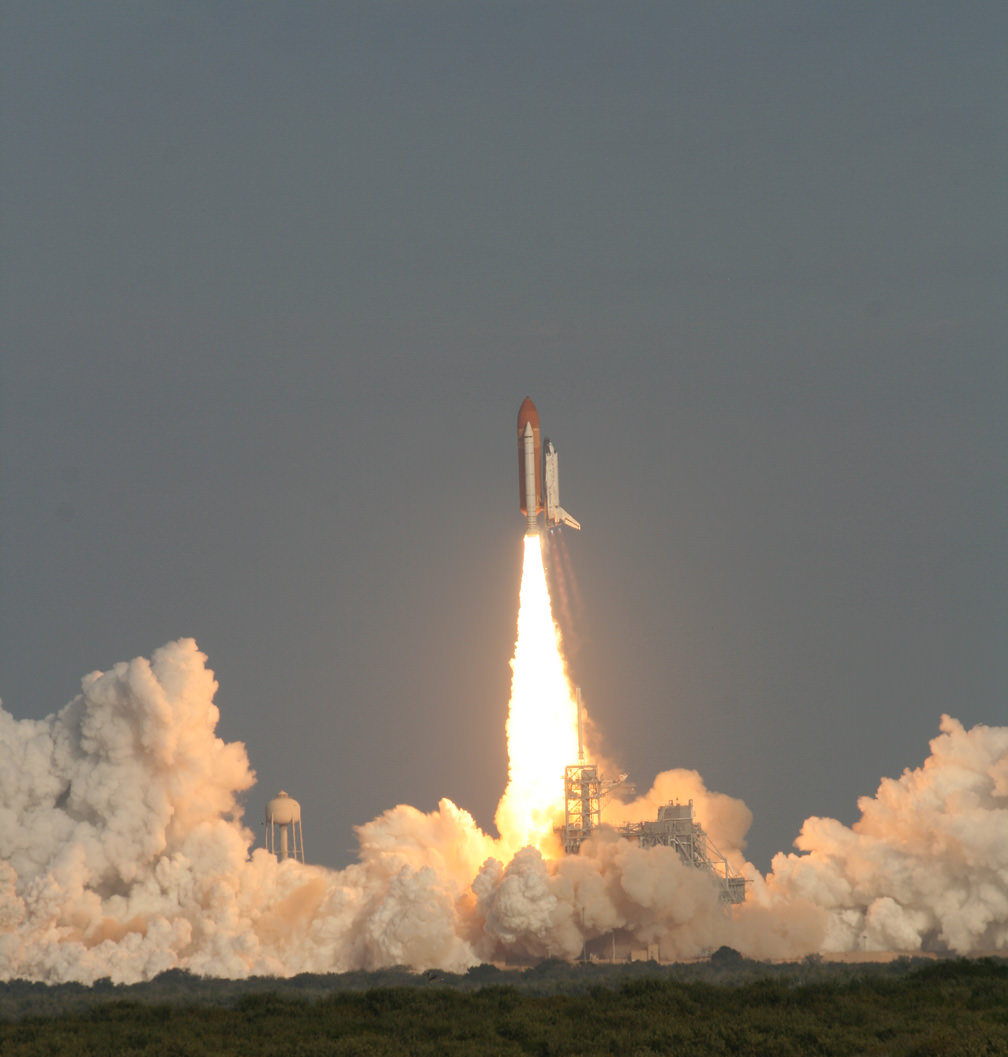
Watch the HD version. More photos below
Imagine ….. “You Are There ! ”
… in the middle of the whooping, cheering crowd at the Kennedy Space Center (KSC) for the historic final launch of Space Shuttle Discovery on the STS-133 mission to the International Space Station.
That’s the feeling you’ll get from this exquisite and exciting piece from amateur videographer Anton Janssen from the Netherlands. Anton has captured the sights and sounds of excitement of the giant crowd in the thick of the action in this amazingly sharp video of Discovery’s last blast to space.
Anton’s vantage point from the NASA Causeway enabled him to film the liftoff with a birds eye view of the entire orbiter to the base of the launch pad – not blocked by the launch gantry at all. And to top that off, the video shows panoramic reaction shots of the large and exuberant crowd. What’s more is you can hear the cheering multitudes at multiple milestones as Discovery ascends with a deafening roar and spewing intense scorching flames out her rear like a gigantic blowtorch burning an indelible hole in the sky.
I happened to meet Anton at Port Canaveral a few days after the launch as Discovery’s powerful Solid Rocket Boosters (SRB’s) were being towed along the canal following their retrieval from the Atlantic Ocean.
[/caption]
Anton told me he bought the camera new and especially for the STS-133 launch after he purchased one of the very hard to get VIP Tickets from the KSC Visitor Complex. He arrived at the viewing site several hours early, along with tens of thousands of other onlookers along the Florida Space Coast beaches and roadways.
“The NASA Causeway was a great viewing site because you could see the shuttle right from the start,” Anton explained.
Check out this amazing close up video view of the final moments of Discovery’s final landing and the finale of her space career as record by Matt Travis, of Spacearium, taken at the Shuttle Landing Facility where I was also stationed.
This timelapse of Discovery’s launch was shot from the Kennedy Space Center Causeway Viewing Site, by David Gonzales of Project Soar. (See our previous article about them.) Here, approximately 12 minutes is condensed into 27 seconds, so about 27 times as fast. Replayed at 15 fps. See the launch and smokey plume change over time as it is tugged on by wind.
Only 1 or 2 flight remain for the Space Shuttle Program until they are forcibly retired for lack of money.
Next up is the launch of Endeavour on April 19 at dusk. Should make for some extremely cool videos and snapshots! Get your gear ready!
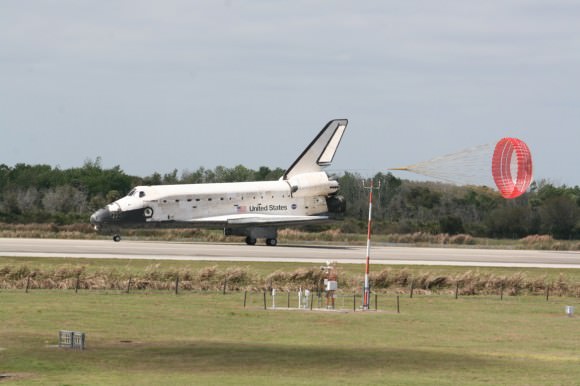
Discovery: Mission Complete
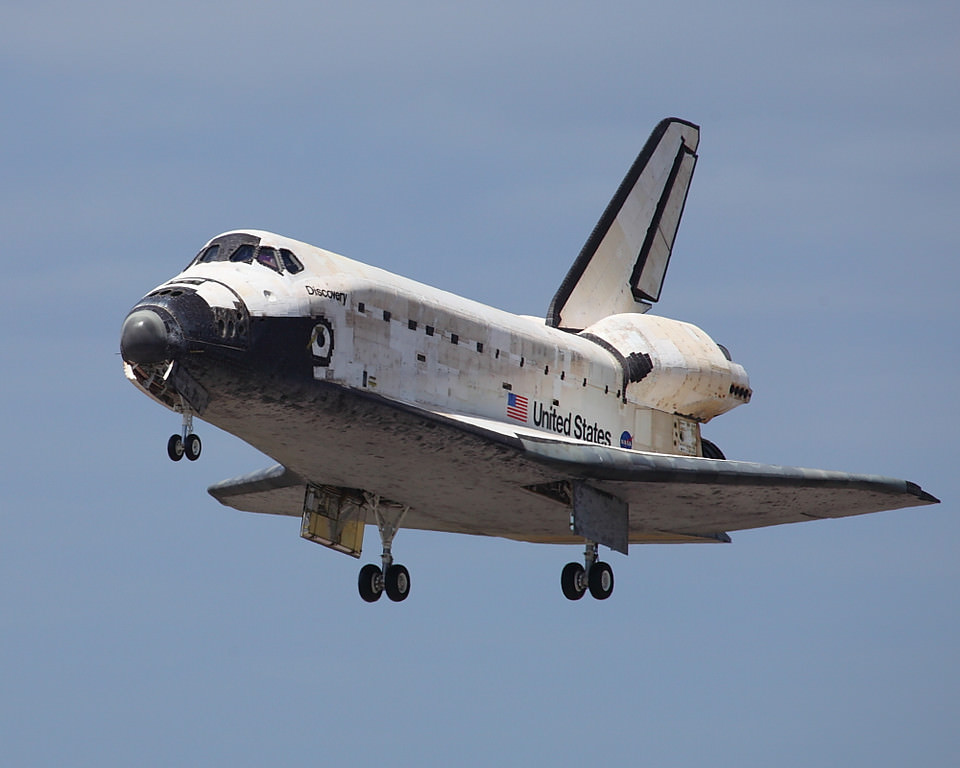
[/caption]
CAPE CANAVERAL – After logging over a year’s worth of flight time in space, the space shuttle Discovery wrapped up a historic career by safely touching down at NASA’s Kennedy Space Center (KSC) in Florida at 11:57 a.m. EDT. The shuttle landed at KSC’s Shuttle Landing Facility on runway 15.
Discovery’s final mission was a resupply flight to the International Space Station (ISS). The shuttle delivered the Leonardo Permanent Multipurpose Module (PMM) to the orbiting outpost. Among other things, the PMM carried the first humanoid robot in space – Robonaut-2 (R2) inside. R2 is also the first robot that the U.S. has flown to the ISS.
The crew that flew Discovery on her final mission consisted of Commander Steve Lindsey, Pilot, Eric Boe and Mission Specialists; Alvin Drew, Nicole Stott, Michael Barratt and Stephen Bowen. Bowen actually was not slated to fly this mission; he was a last-minute replacement for Tim Kopra who broke his hip in a bicycle accident in January.
The lead-up to Discovery’s final mission was one filled with technical hurdles that NASA’s engineers had to overcome before the shuttle thundered one last time to orbit. On the Nov. 5 launch attempt a leak at the Ground Umbilical Carrier Plate (GUCP) caused a scrub. Upon inspection technicians found a section of popped-up foam on the shuttle’s external tank – this led them to discovering numerous, small cracks in the aluminum body of the external tank itself.
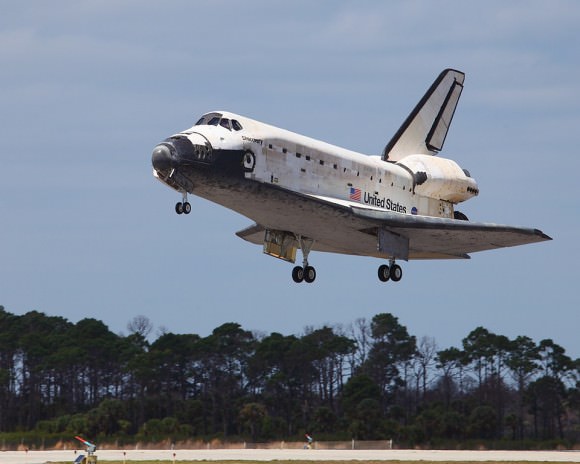
When Discovery was set to launch on Feb.24, a range issue crept up at the last minute almost scrubbing the launch. It was cleared with only seconds to spare.
Discovery’s service record is a distinguished one. Whenever NASA had a critical mission to fly – Discovery got the nod. The orbiter carried Sen. Jake Garn as well as former Mercury astronaut and Senator John Glenn to orbit. It delivered the Hubble Space Telescope to space. And it returned the U.S. space program to orbit, twice, after the Challenger and Columbia accidents.
“If you think of a vehicle that’s 27 years old, you never see a vehicle that age that never comes back with no flaws, however Discovery did just that, she functioned flawlessly,” said Commander Steve Lindsey upon landing. “This is a tribute to the Kennedy Space Center team.”
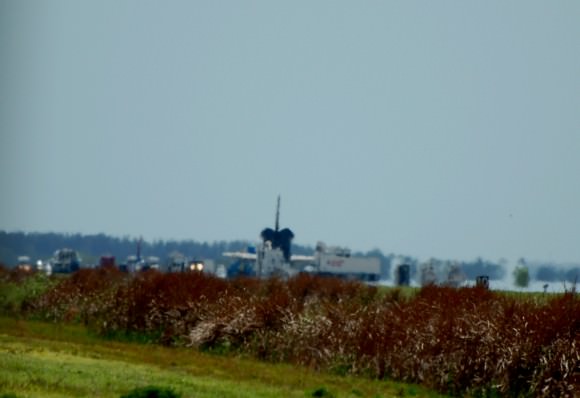
The next phase of Discovery’s career is retirement; she will now head to the Smithsonian Institute’s Steven F. Udvar Hazy Center in Washington D.C. where she will be put on display. Discovery will take the place where Discovery currently resides.
“Discovery is an amazing spacecraft and she has served her country well,” said NASA Administrator Charles Bolden. “The success of this mission and those that came before it is a testament to the diligence and determination of everyone who has worked on Discovery and the Space Shuttle Program, over these many years. As we celebrate the many accomplishments of this magnificent ship, we look forward to an exciting new era of human spaceflight that lies ahead.”
There are only two missions left in the shuttle program, STS-134 onboard Endeavour which is slated to fly on Apr. 19 and STS-135 which will be flown by Atlantis on June 28.
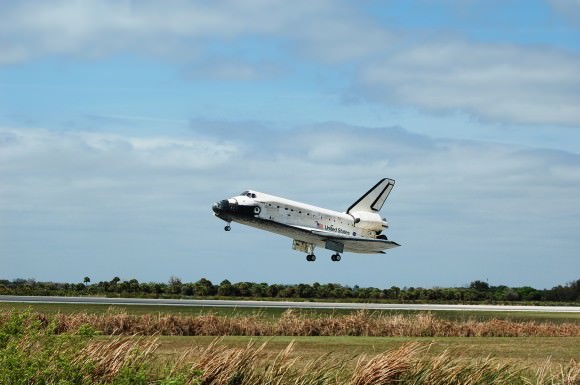
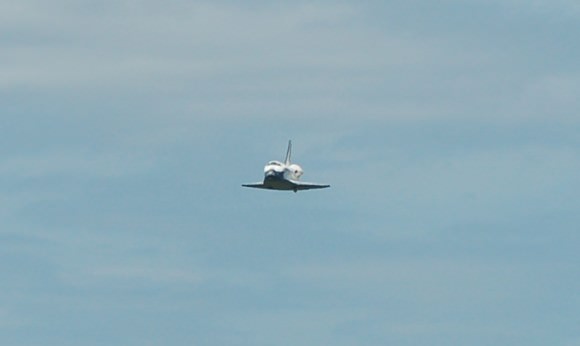
STS-133 Crew Pays Tribute to Shuttle Discovery
The STS-133 crew sent down a video from orbit today where they each paid tribute to the legacy of space shuttle Discovery. My favorite line was from Nicole Stott: “I’m looking forward to bringing her home to the people who care for her the most, to the time when we are on the runway and can look back and still see her standing on her own gear, with her own proud wings holding her up before she goes back to that hanger for the last time.”
Best Images from STS-133: Discovery’s Final Mission in Pictures
[/caption]
As space shuttle Discovery prepares to return home from its final mission to space, let’s take a look back at the STS-133 mission, an historic “last” for the program’s most-traveled shuttle. “I think the legacy that this shuttle has made for herself is just nothing short than cause for celebration,” said mission specialist Michael Barratt during press conference from orbit on March 8.
“It’s going to be sad when it’s over, when we land tomorrow or the next day,” said STS-133 commander Steve Lindsey. “The hardest part of this for me is giving up the capability. It can do everything except leave low-Earth orbit…There is not a single thing wrong with her. Every single system and every piece of every system is working just like it’s brand new.”


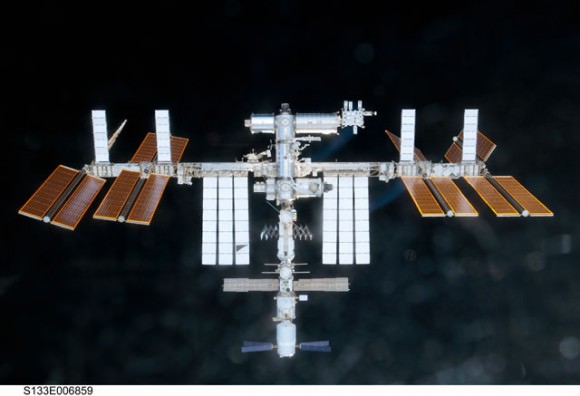
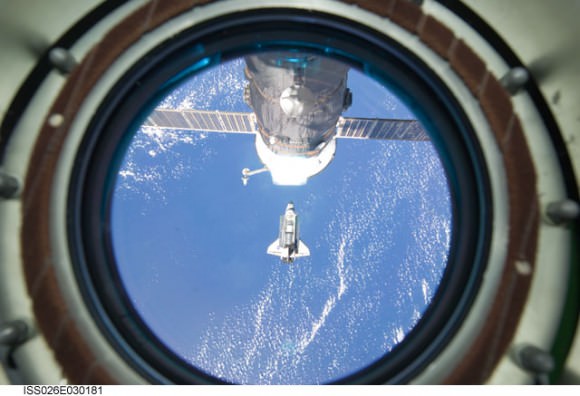
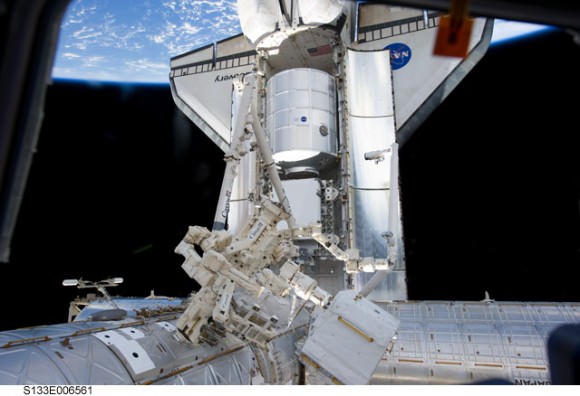
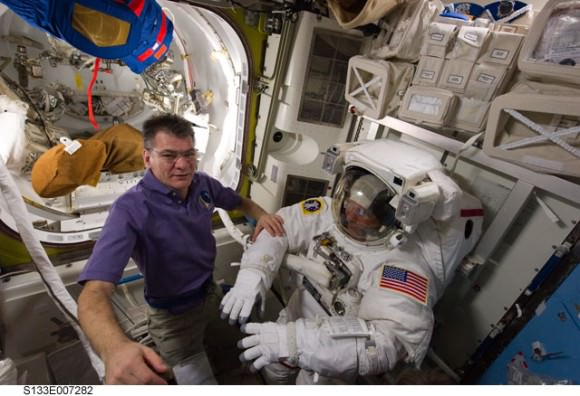
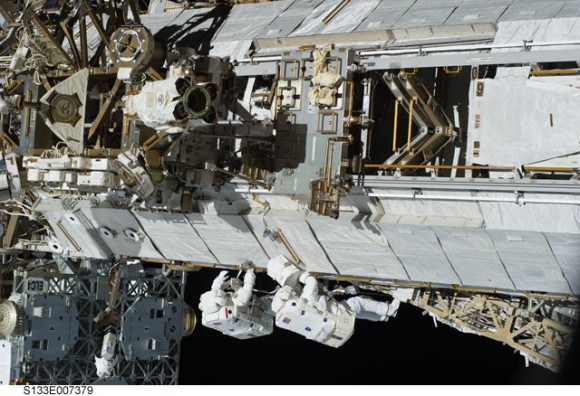
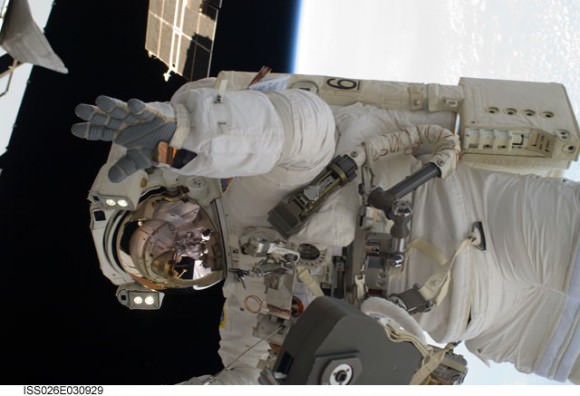
The first spacewalk of the mission lasted six-hours and 34-minutes. Alvin Drew and Steve Bowen installed a power extension cable, move a failed ammonia pump module to the External Stowage Platform 2 on the Quest Airlock for return to Earth at a later date, installed a camera wedge on the right hand truss segment, installed extensions to the mobile transporter rail and exposed the Japanese “Message in a Bottle” experiment to space.
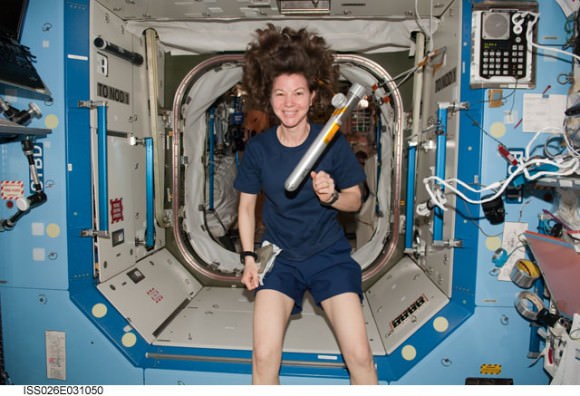
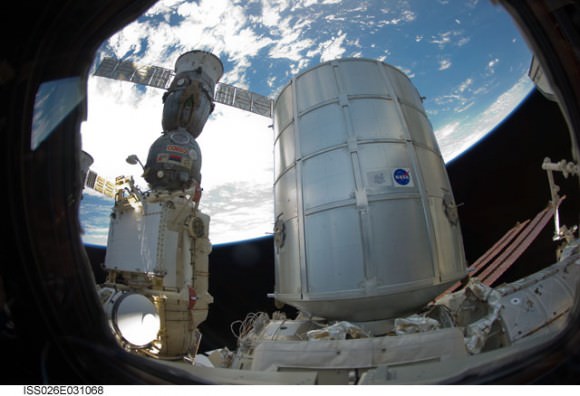
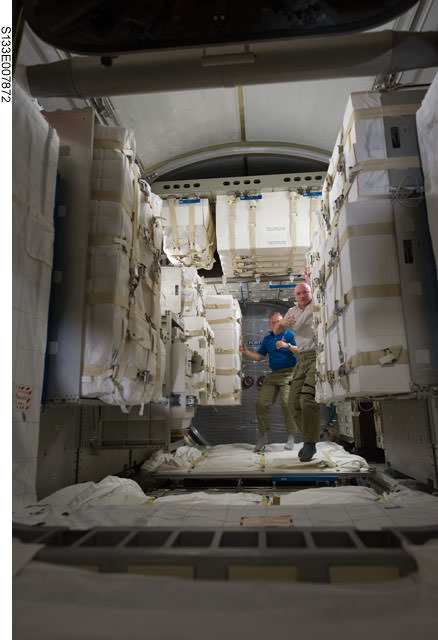
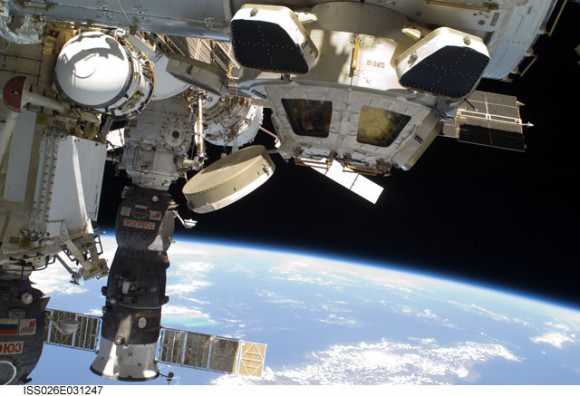
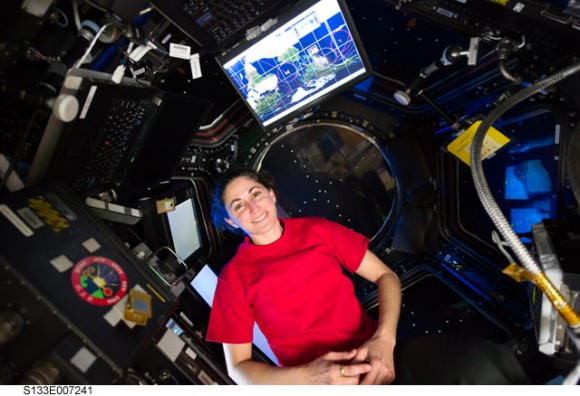
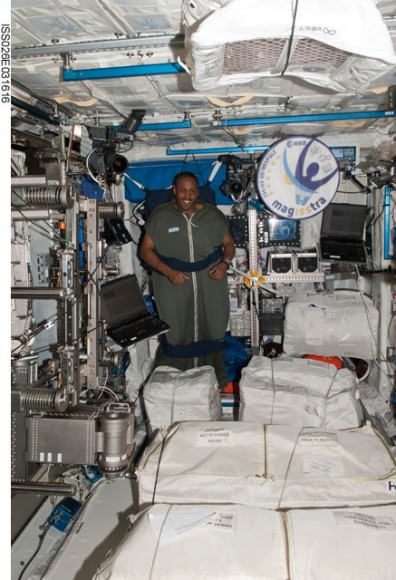
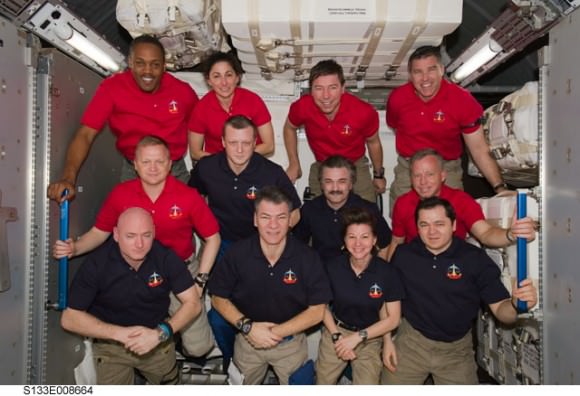
Joint crew photo inside the newest module, the PMM — which is basically a big storage closet for the ISS. The STS-133 crew members, all attired in red shirts(from left)are NASA astronauts Alvin Drew, Eric Boe (below), Nicole Stott, Michael Barratt, Steve Bowen and Steve Lindsey (below). The dark blue-attired Expedition 26 crew members, from bottom left, are NASA astronaut Scott Kelly, European Space Agency astronaut Paolo Nespoli, NASA astronaut Cady Coleman along with Russian cosmonaut Oleg Skripochka. In the center of the photo are Dmitry Kondratyev and Alexander Y. Kaleri.
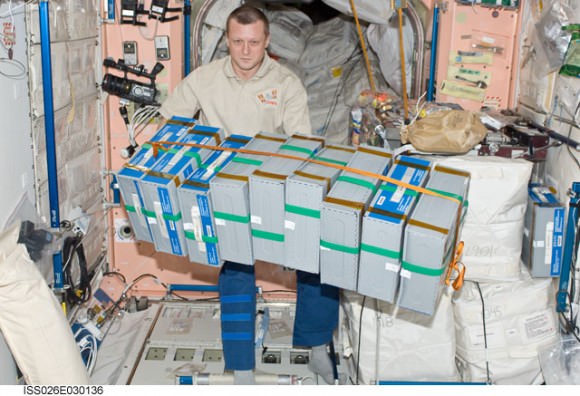
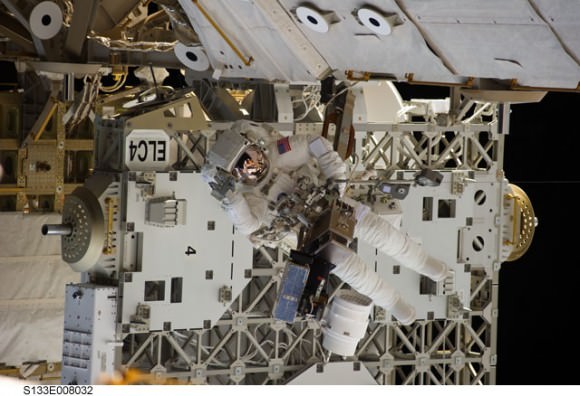
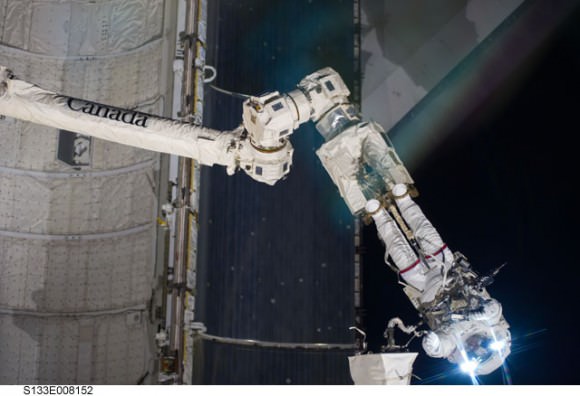
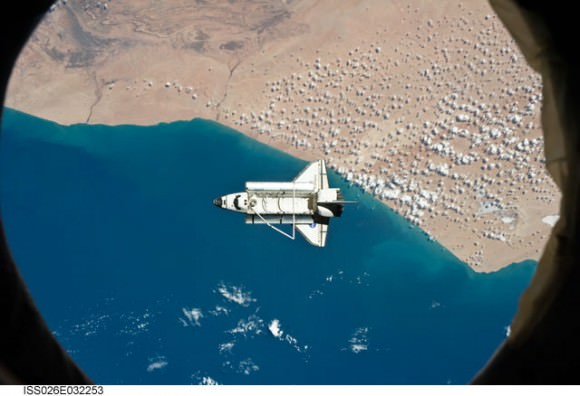
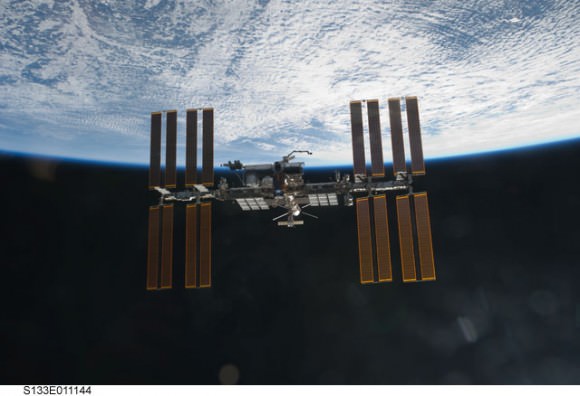

Larger versions of all these images can be found at NASA’s Human Spaceflight website, under the STS-133 gallery.
Click here to see our gallery of launch images for Discovery’s final flight.
Here’s a video recap of the STS-133 mission:
Double Spaceship Sighting Alert – and last chance to see Discovery in orbit
[/caption]
UPDATE: We’ve already got a sighting! The image above was taken this evening in the UK by science writer Will Gater.
Space shuttle Discovery undocked from the ISS on early Monday, March 7, and depending where you live, you might have an opportunity to see the two spaceships flying in tandem. This is an incredible sight, and will be the last opportunity to see Discovery in orbit, as she will be retired after she lands and completes the STS-133 mission. Spaceweather.com reports that the station and shuttle will be flying over parts of the United States and Europe Monday and Tuesday, appearing in the night sky as a closely-spaced pair of bright lights. The ISS is bigger, so will appear as the brighter object trailing the smaller Discovery as they move across the sky.
To find out if you’ll be able to see the two spaceships in your area, there are a few different sites to check out:
NASA has a Skywatch page where you can find your specific city to look for satellite sighting info.
Spaceweather.com, has a Satellite Tracker Tool. Just put in your zip code (good for the US and Canada) to find out what satellites will be flying over your house.
Heaven’s Above also has a city search, but also you can input your exact latitude and longitude for exact sighting information, helpful if you live out in the country.
Seeing the two spacecraft flying closely in tandem is a very unique and thrilling sight. Good luck!
Below, watch some of the incredible views as Discovery performed the fly-around maneuver of the ISS early Monday.

